What started off as a power sector consultancy firm in 1998, Sharika Enterprises today offers niche EPC solutions in the power T&D space. In this exclusive interview, we have Rajinder Kaul, Chairman & Managing Director, Sharika Enterprises Ltd, sharing a comprehensive view on his company’s exciting journey. Rajinder Kaul strongly feels that disruptive technologies like AI and ML will reshape the technical contours of the power T&D sector and this is exactly the opportunity that Sharika Enterprises would like to develop on. An interview by Venugopal Pillai.
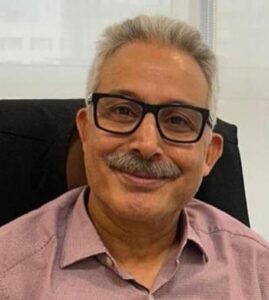
As we understand, Sharika Enterprises started out as a power sector consultancy firm in 1998. Tell us about the rationale for entering the EPC space.
As we had been providing insights into Indian power sector to our clients, we realized that there is going to be a big change there. Until 2002, when Indian Electricity Act came on to picture, the power sector was serviced by either few OEMs or contractors, as there was very little adoption of latest technologies there, especially in power distribution.
Of course, we started with EHV cables, as our Korean partner was looking for some local EPC expertise and there was a gap. But after 2002, we saw that government wanted to modernize the power distribution infrastructure and many new applications started coming up for the first time.
Companies like IBM, Infosys, HCL, etc were showing interest apart from regular power component supplier companies. The need was getting created for specialized EPCs or should we say a combination of EPC contractors and system integrators.
It was here that we decided to pursue EPC contracts where there was significant play of technology like intelligent switchgear, communication, software, etc, along with other EPC activities including civil works.
Is Sharika Enterprises an independent Indian firm or does it also represent foreign principals?
Yes, we do work with some distinguished foreign technology principals like LS Cables Korea, Hyosung Korea, General Electric USA, Tavrida Russia, EMT Korea, Schneider Electric and now recently signed agreement with Incell Korea for the lithium battery-based storage systems. We take the core components from the OEMs and build tailor-made solutions for customers.
Tell us broadly about your current areas of operation in the power T&D sector.
Being small, we focus on projects that give us opportunity to showcase our skills and expertise. That is the reason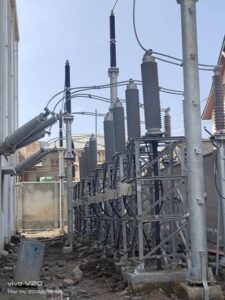 , we have delivered projects, which are very complex and diverse, be it Complete Radio Communication Network for entire Thimphu City for Bhutan Power Corporation; Designing BSES Rajdhani’s Optical Fibre Network for Delhi covering all their Substations, Offices, so that same network can be used for Control Centre; providing Dual Stack IP MPLS & MPLS TP-based services; or developing a first-of-its-kind Micro Grid Test Bed for NTPC NETRA, apart from various SCADA, unmanned substations and feeder automation jobs for state utilities of Himachal Pradesh and Assam, apart from private utilities like Tata Power, BSES etc.
, we have delivered projects, which are very complex and diverse, be it Complete Radio Communication Network for entire Thimphu City for Bhutan Power Corporation; Designing BSES Rajdhani’s Optical Fibre Network for Delhi covering all their Substations, Offices, so that same network can be used for Control Centre; providing Dual Stack IP MPLS & MPLS TP-based services; or developing a first-of-its-kind Micro Grid Test Bed for NTPC NETRA, apart from various SCADA, unmanned substations and feeder automation jobs for state utilities of Himachal Pradesh and Assam, apart from private utilities like Tata Power, BSES etc.
We have done many challenging projects in cables in remote places like Kargill, Uri, Teesta, Leh, etc. which gave us an edge over conventional players.
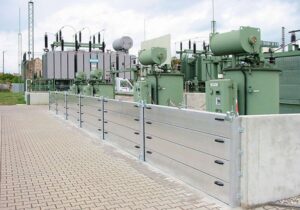 With our partners and collaborators, we have launched a new range of intelligent pole-mounted switchgear which is going to revolutionize the market of MV switchgear like Autoreclosers, Sectionalizers, Automatic Fault Isolators etc. with lot of variants unlike before. This, coupled with our cloud-based solutions, will drastically improve feeder availability at very low cost for rural feeders as well.
With our partners and collaborators, we have launched a new range of intelligent pole-mounted switchgear which is going to revolutionize the market of MV switchgear like Autoreclosers, Sectionalizers, Automatic Fault Isolators etc. with lot of variants unlike before. This, coupled with our cloud-based solutions, will drastically improve feeder availability at very low cost for rural feeders as well.
However, we find that the opportunity space for technology intervention is limited. To be specific, so far we have been hearing about advanced application layers over SCADA systems like distribution management system (DMS), outage management system (OMS), integrations with Gespatial Systems, ERP, etc.
But a lot has yet to come, as we see disruptive technologies like AI and ML will reshape the solutions of tomorrow, moving from ‘Situational Awareness’ regime to ‘Intelligent and Self Learning Algorithms’ enabling accurate forecasting of events, asset health etc. Sharika would like to be in that space.
We understand that Sharika is associated with LS Cable of Korea with respect to EHV cables. Tell us more.
Together with LS, we have achieved many milestones now. Recently we got India’s second 320kV HVDC cable project, worth $60- 70 million with them from Adani. Now we look forward to getting into marine cable projects soon.
We appreciate that Sharika has identified “Smart Grid” as a business growth area. Please discuss what are the specific segments within the Smart Grid architecture that Sharika would be interested in pursuing?
As I mentioned earlier, we do not want to be in large but run-of-the-mill projects. We will pursue whatever is “smart”. Our skill set and ambition is to deploy cutting-edge technologies to on-ground projects.
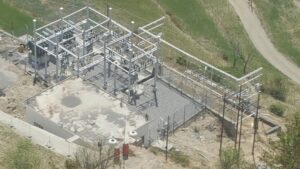 The biggest market for that skill set is not only Smart Grid but Smart Infrastructure i.e., Smart Cities including water and gas distributions, smart lighting, IoT-based solutions from single command & control centre, etc.
The biggest market for that skill set is not only Smart Grid but Smart Infrastructure i.e., Smart Cities including water and gas distributions, smart lighting, IoT-based solutions from single command & control centre, etc.
We have just delivered a small Smart City Pilot project for PGCIL’s Jammu Campus that includes power distribution, water and waste water, smart meters (AMI), smart streetlights, water fountain, access for disabled, surveillance etc.
We can see the development of solar and other renewable sources getting connected to the distribution system. With rooftop solar, there will come the challenges of voltage pollution. Now with new developments around the EV markets, power flows will become extremely complex. Our grid was designed for one-way power flows, but with these new components added, the ways to manage the grid will also undergo major changes.
Through our subsidiary “Sharika Smartec Pvt Ltd” we have already started the process of filing patents around new algorithms and software that will help DSO operations, including reactive power dispatching, for distribution companies.
We understand that Sharika has recently won a major contract for GIS substations in UT of J&K for the Z-Mohr Tunnel project. What is the scope of the project and the current status?
Yes, we have won this prestigious 132/33kV GIS substation project that is going to power up the Z-Mohr Tunnel infrastructure. We have already started negotiations for major equipment and will be placing the orders soon, especially for long-delivery items and are already in touch with all major multinational OEMs.
Tell us in brief about the various activities that Sharika has proposed in the solar power space.
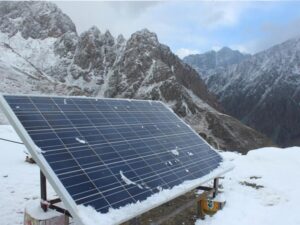 Sharika has been associated with SECI and MNRE for a long time and has delivered several rooftop as well as ground-mounted solar projects. But now, our focus is on very specialized microgrid projects. We have already demonstrated our competence in creating a bumpless, self-islanding and reconnecting microgrid with NTPC where we developed special grid-connected battery inverters, with our Korean Partner DIK.
Sharika has been associated with SECI and MNRE for a long time and has delivered several rooftop as well as ground-mounted solar projects. But now, our focus is on very specialized microgrid projects. We have already demonstrated our competence in creating a bumpless, self-islanding and reconnecting microgrid with NTPC where we developed special grid-connected battery inverters, with our Korean Partner DIK.
We feel both rural and urban microgrids are future for achieving our urban sustainability goals and target to power up remote villages, islands and critical infrastructure including communication, water and gas pipelines, etc.
The Revamped Distribution Sector Scheme (RDSS) offers tremendous opportunities for companies to become AMI service providers. Does Sharika plan to enter this area?
We are technically qualified in SCADA-related RDSS packages. RDSS also offers big opportunity for us to provide our award-winning feeder automation products like auto-reclosers, smart load break switches (sectionalizers), etc. Though we are not present in metering space, we have a strong focus on the communication technologies for AMI and have a team well qualified to deliver system integration services there.
All industrial photographs seen in this interview relate to projects executed by Sharika Enterprises.


